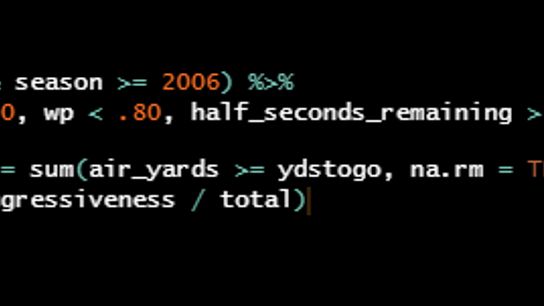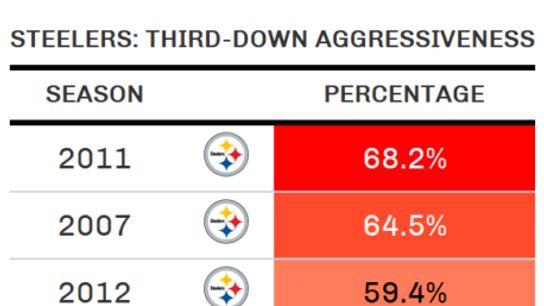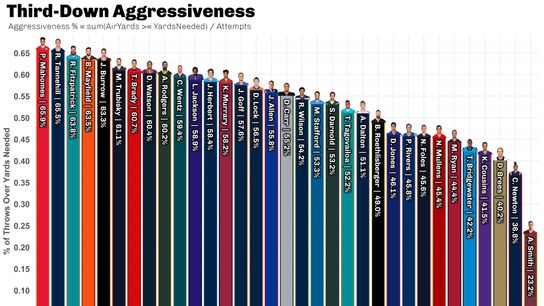To be blunt, it was not a stellar year for the passing attack for the Pittsburgh Steelers. Case in point, Ben Roethlisberger had one of the lowest intended air yards per attempt in the league, at just 6.9 yards.
Air yards, for those new to advanced analytics, is the distance the football travels from the quarterback’s release to the point of reception (or, in this case, the reception or intended reception). The air yards metric is a far better indicator of a quarterback’s overall impact on the passing game, as it removes yards after catch from the quarterback’s statistics.
So, yes: an intended air yards average of just 6.9 yards is bad.
But it gets worse. While Roethlisberger’s intended air yards per attempt was 8th worst in the league, his completed air yards per attempt was 4th worst in the league at 3.0 yards. The only quarterbacks with a lower number? Sam Darnold (2.9), Alex Smith (2.5), and Dwayne Haskins (2.4).
It is not exactly the kind of company Roethlisberger wants to be with.
That said, air yards can - and should - be contextualized. For example, how helpful were those air yards? In other words, while the totality of Roethlisberger’s air yards was painfully little, were they, in fact, more helpful than a broad look at yardage per attempt would suggest?
One way to answer that is to look at Roethlisberger’s aggressiveness. And there are a number of ways to break that down.
In this specific case, let’s look at Roethlisberger’s aggressiveness in third down passing both since 2006 and during the 2020 season against all other quarterbacks.
It needs to be noted that 2006 is not an arbitrarily chosen date as air yards are an advanced metric that was not routinely tracked until that season.
As well, in order to not have skewed data, we will filter out what is considered “garbage time” plays in the analytics community meaning any plays that happened after the two-minute warning when the winning percentages are outside of a 20-percent-to-80-percent range.
Using the R programming language and the fantastic nflfastR package, the coding to pull the data back to 2006 looks like this:

The mathematical premise is very simple. We are taking the total number of third down passing attempts that are not included in the above-mentioned garbage time filter and then dividing that by the number of attempts wherein the total air yards was greater than or equal to the necessary yards to go.
The resulting numbers indicate how often Roethlisberger “threw for the sticks” on third down, which is a solid way to measure aggressiveness through the air.
Looking at the Steelers' numbers since 2006 is quite telling.

The last two seasons have been, by far, the worst for third-down aggressiveness in Pittsburgh. In 2020, the Steelers faced the scenario 111 times. Of those, Roethlisberger only threw to, or beyond the sticks, 48.6% of the time. That is far from what I consider aggressive.
On the other end of the spectrum, the 2011 version of the Steelers was insanely aggressive. Facing the third-down scenario outside of garbage time just 85 times, Pittsburgh dialed up a passing play that went to or beyond the sticks in the air over 68-percent of the time.
The 2019 and 2020 seasons have not been kind to those fans wanting to see Pittsburgh be aggressive in third down situations.
However, this is an institutionalized look at the situation. Perhaps Pittsburgh’s 48.6% aggressiveness rate in 2020 is holding steady with the league average.
Let us look.

Clearly, Roethlisberger and the Steelers are far behind the league in terms of aggressiveness on third down. Patrick Mahomes and Ryan Tannehill are leading the league with over a 65% aggressiveness rate while the Steelers and Roethlisberger are in the bottom third of the league with just over 48.6% when rounded up.
There is obviously a need for a lot more examination on this topic but, at face value, the lack of third-down aggressiveness from Pittsburgh is a serious cause for concern.
Obviously, one must question why there is an abject refusal to throw for the first down in third down situations compared to the majority of the league. As well, it is fair to wonder if the lack of a consistent running game is a variable at play. Defenses may move players out of the box to defend the pass in third down situations knowing the Steelers’ running game was something less than threatening through the course of the season.
Regardless, it is an issue that Matt Canada must address as he installs his system at the confluence of the rivers.



